During an astrometry of an outer uranus moon and a search for new minor planets, I discovered a stellar flare brighter than 16.2th magnitude (unfortunately 5 days after exposure). I used the ROTAT telescope (thanks again for this!) - a 60 cm Newtonian with a corrector and a resulting focal ratio of 3.2. All exposures were made with a SBIG STL-11000M and 100 sec unfiltered exposure time. The download time between the images was around 32 seconds (varies in the range of some seconds):
You can see a sequence of screen copies of the centroid window of Astrometrica, also availabe as a small video:
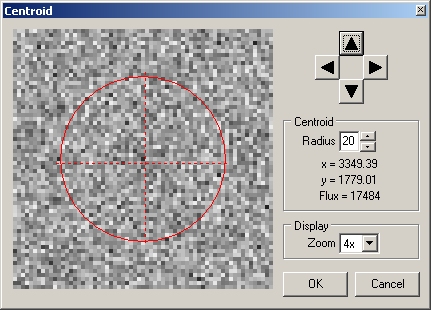
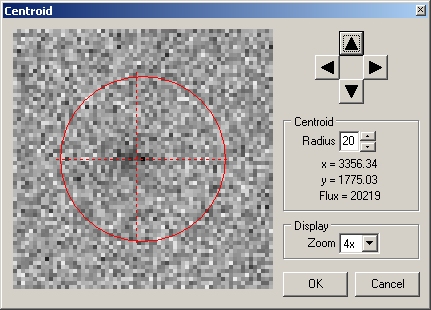
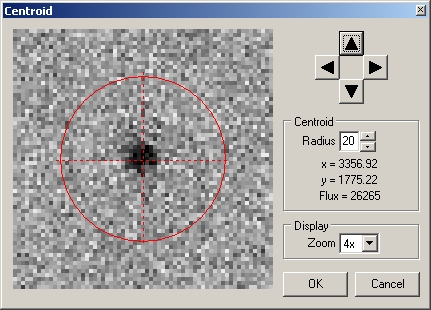
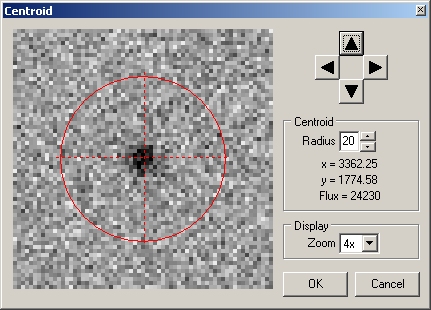
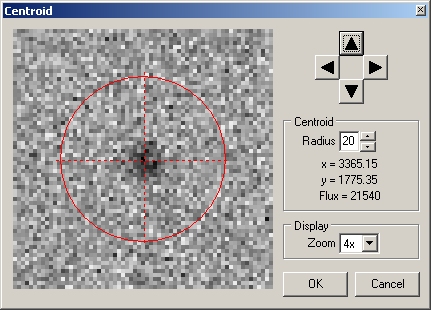
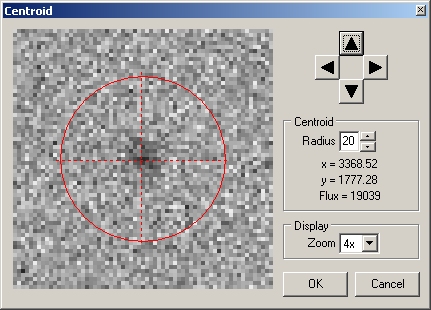
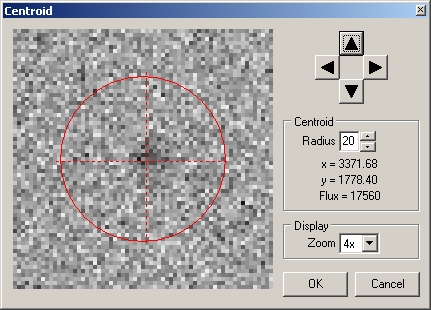
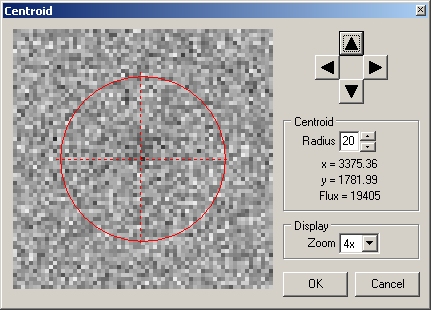
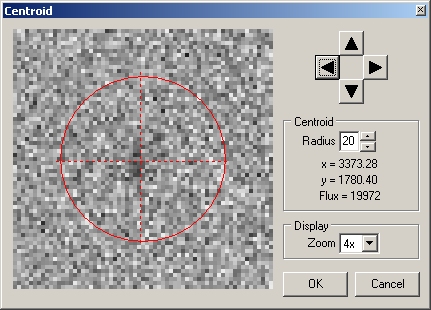
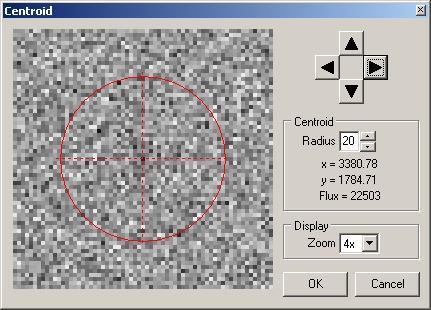
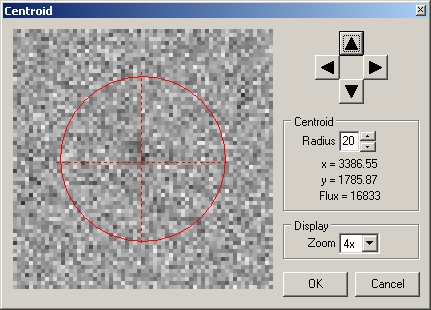
A search for distant artifical satellites show no results. Nearer satellites would show a motion.
A GRB list show no entry for this date at this position adn also not for other dates at this position.
At the position of this flare or very near is a star at the red POSS:
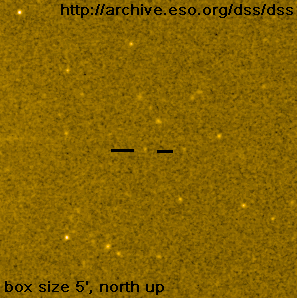
An Aladin search doesn't give any result (Postscript):
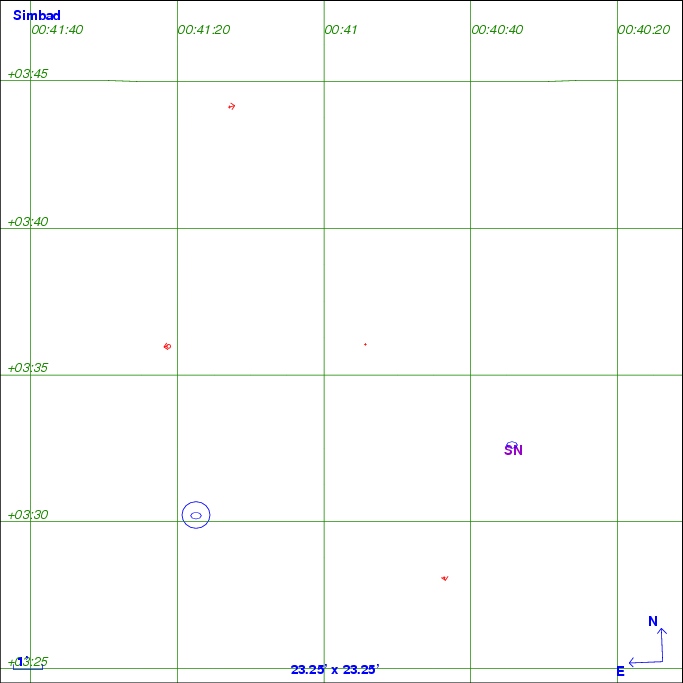
A table of all position and magnitude observations. The time is in UT of 2013 september, the right ascension is in seconds of J2000.0 (plus 00h41m), the declination in arc seconds of J2000.0 (plus +03°35') and the magnitude is given in unfiltered CCD magnitude. The measurements are made with Astrometrica. The object has no clear motion, it seems fixed. The peak magnitude may be magnitudes brighter, because the exposure time of 100 sec for each exposure show a lower mean of a process faster than this time:
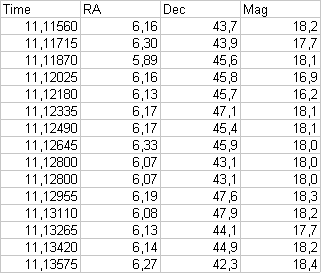
The lightcurve is very noisy due to the limiting magnitude of a little more than 18th magnitude. Unfortunately the exposures were not perfect in focus. The error of the measurements may be 0.5 at the limit and maybe 0.3 at the brighter values - it`s only an estimation:
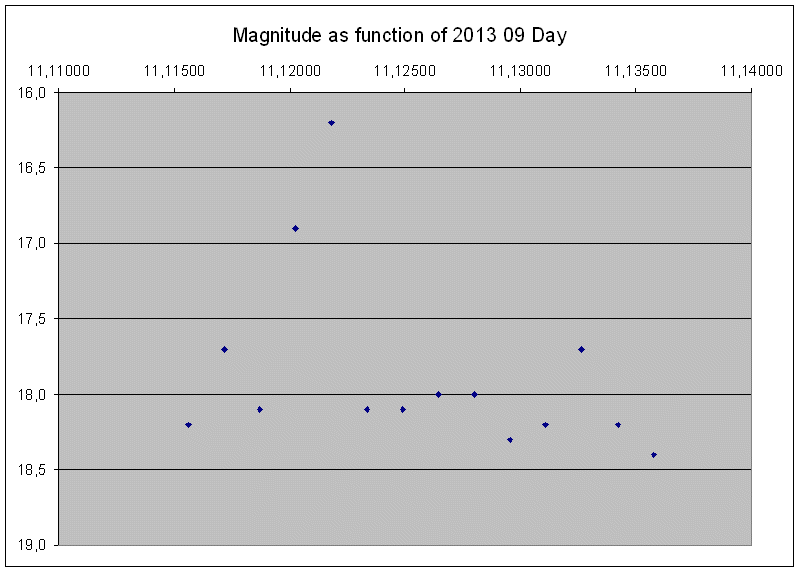
Because I made 144 exposures of 100 sec each, I added three stacks with 48x100s=80m exposure time. The star itself is visible at all three stacks. The measured magnitude is a mean of the total exposure time, so the brightness at outburst is only slightly above the brightness of the first two pictures. The star seem to have normal brightness between 19 and 20 magnitude:
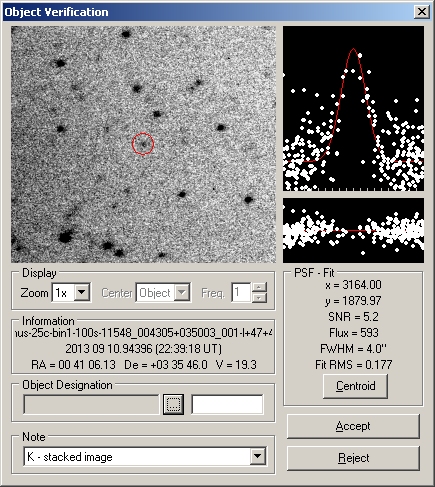
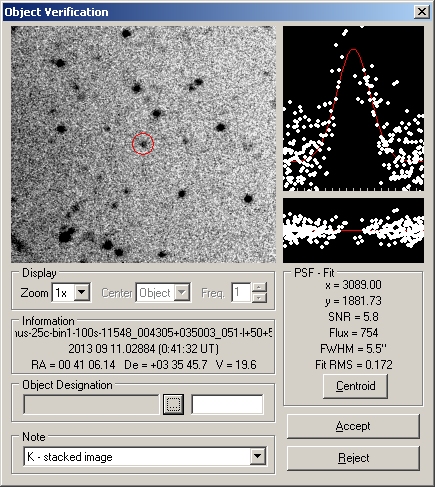
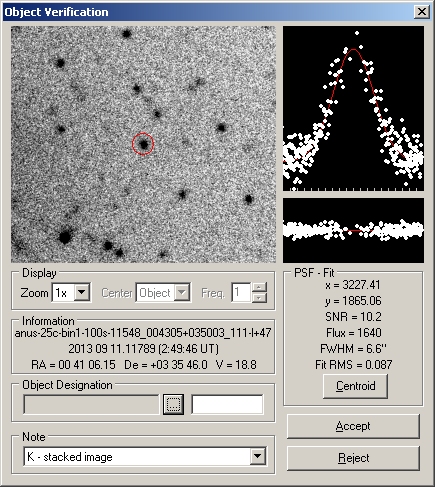
At last an overview image with 4 hour exposure time:

Maybe someone with a greater telescope can make more observations of the star (color, spectrum) at this position.
Jost Jahn, Smäswai 4, 25946 Nebel, Germany, stellarflare@jostjahn.de